Traditionally, most homes in the UK have been heated with the use of fossil fuels. To this day, it’s not unusual to see a natural gas or LPG (liquid petroleum gas) boiler in many residential and commercial properties up and down the country.
There’s a massive problem with that, though:
If we are to reach Net Zero by 2050, we’ll all have to reduce our carbon footprint significantly by replacing our old gas boilers with devices that use renewable energy sources, such as heat pumps.
But is an air source heat pump worth the money?
Absolutely!
In fact, as you’re about to find out, an air source heat pump (ASHP) is a solid, long-term investment that has plenty of benefits.
So, if you’re seriously considering buying a heat pump, our in-depth guide will clear up many of the grey areas surrounding air source heat pumps and help you make the right choice.
Without further ado, let’s jump right in!
Table of contents:
- What is an air source heat pump?
- How does an air source heat pump work?
- Pros and cons of air source heat pumps
- What size heat pump do I need?
- How much are air source heat pumps?
- How do I choose an air source heat pump?
What is an air source heat pump?
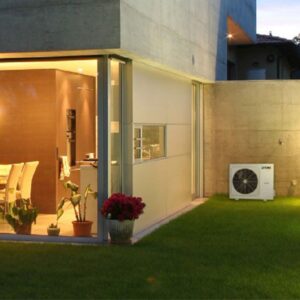
Invented all the way back in 1856, the air source heat pump, also known as air to water heat pump, is a heating and cooling system that uses the principles of thermodynamics to transfer heat from the outside air to the inside of a building for heating or cooling purposes.
Basically, it functions on the same principle as a refrigerator – just in reverse. So, instead of removing heat from the inside of your home and expelling it outside (as in the case of an air conditioner), an air source heat pump extracts heat from the outside air and brings it indoors.
Now:
There are two types of air-to-water heat pump systems – monoblock and split.
With a monoblock (also referred to as just mono) system, all the components are located in a single outdoor unit. With a split system, on the other hand, you have both an outside and an inside unit (hydronic box), which makes this type of system slightly more energy efficient.
How does an air source heat pump work?
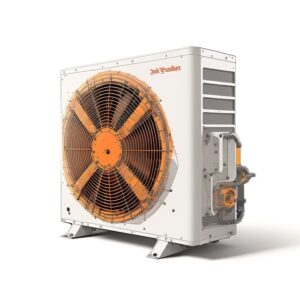
Now that we know the basics, let’s take a closer look at the different stages of the process. While we’re going to focus on split systems, the steps are virtually the same for monoblock systems. The main difference is that the whole process takes place outside the house rather than partially inside.
Here’s how it goes down:
Step 1: Air absorption from outside air
In a split system, the process begins with an outdoor unit, which contains a refrigerant that circulates in a closed loop. This unit is equipped with a heat exchanger or coil that is exposed to the outside air.
But what happens when the temperatures drop below freezing point?
Actually, even when it appears to be extremely cold outside, there’s at least some heat energy still present in the air.
So, the refrigerant can absorb this heat from the air, with some models more than capable of doing this in temperatures of as low as -15°C or even -25°C.
Mind–blown!
Step 2: Compression
The refrigerant, now in a gaseous state and containing the heat absorbed from the outdoor air, is compressed by a compressor unit. The compression process increases the temperature and pressure of the refrigerant, making it even hotter.
Step 3: Heat release to water
The hot, high-pressure gas is then circulated through an indoor unit, which contains another heat exchanger. This indoor heat exchanger is connected to the water-based heating system, which may include underfloor heating or radiators.
The heat from the refrigerant is transferred to the water circulating in the heating system. As a result, the water’s temperature increases, supplying heating for the indoor space or domestic hot water.
Step 4: Expansion and repetition of the cycle
After releasing its heat to the water, the refrigerant is expanded through an expansion valve or device, causing it to cool down and return to a liquid state. It’s then recirculated back to the outdoor unit to absorb more heat from the outdoor air. The cycle continues as long as heating or hot water is needed.
To find out more, check out our dedicated guide.
Pros and cons of air source heat pumps
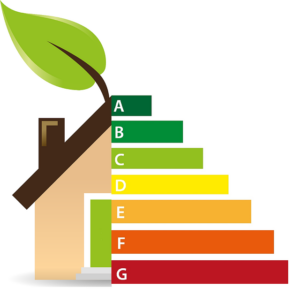
As we mentioned at the very beginning of this buyer’s guide, these high-performance pumps come with plenty of benefits.
That being said:
No heating device is perfect, not even air source heat pumps. So, in the interests of fairness, we’re going to cover both their benefits and perceived disadvantages.
Pros
- Improved energy efficiency – generally more energy-efficient than traditional heating and cooling systems, as they move heat rather than generate it through combustion.
- Lower operating costs – can lead to cost savings on your energy bills, especially in comparison to systems that rely on fossil fuels like oil or gas.
- Environmentally friendly – produce fewer greenhouse gas emissions, making them an eco-friendly choice for heating and cooling. So, they can reduce your carbon footprint dramatically.
- Easy installation – easier to fit than some other heating systems, as they do not need a fuel storage area or a chimney. They’re also suitable for retrofitting existing homes.
- Year-round functionality – can provide both heating in the winter and cooling in the summer, making them a one-stop solution that effortlessly guarantees year-round comfort.
Cons
- Initial cost – can be higher than some other types of heating systems. However, this cost can often be offset by energy savings over time.
- Noise – outdoor units can produce noise, which may be a concern if they’re located close to living spaces or neighbours. However, newer models tend to be quieter.
- Space requirements – require outdoor space for the installation of the outdoor unit (both outdoor and indoor spaces for split systems), and they may need occasional cleaning for proper airflow.
What size heat pump do I need?

As with other types of heating devices, such as boilers, the term air source heat pump size is used to denote the system’s output measured in kilowatts (kW) rather than the unit’s dimensions. Most domestic air source heat pumps in the UK are available in 4kW to 16kW options.
Now that we’ve made that clear:
We should point out that determining the right size for an air source heat pump is a crucial step in ensuring that it operates efficiently and effectively in your home. For instance, an ASHP that is too small may struggle to meet your heating or cooling demands.
So, the bigger – the better, right?
Not necessarily. If your heat pump is too large, it may result in inefficient operation and unnecessary costs.
After all, you wouldn’t use an industrial boiler to heat a two-bedroom flat, would you? The same goes for a heat pump.
The main factors that will determine the right size for your particular situation are as follows:
✅ Home size
✅ Insulation levels
✅ Local climate
✅ Heating & cooling needs
✅ Zoning & control (if applicable)
Having said that, here are some typical scenarios to give you a general idea of what you’re likely to need.
| Number of bedrooms | Recommended AHSP size |
| 2 bedrooms | 4-6kW |
| 3 bedrooms | 5-9kW |
| 4 bedrooms | 9-15kW |
| 5+ bedrooms | 15-16kW |
If your home’s insulation leaves something to be desired, you might want to go for the higher end of each range. But if it’s top-notch, you should be pretty safe opting for the lower end.
Naturally, the bigger the size you need, the more expensive the heat pump is going to be.
‘Just how expensive’, we can hear you wondering.
It’s time to find out!
How much are air source heat pumps?
As we mentioned earlier, the initial outlay is one of the main disadvantages of the typical air to heat pump system.
Here’s a quick breakdown:
The air source heat pump cost by itself (that is, not counting the air source heat pump installation) can vary significantly based on the manufacturer and the system size. The type of system also plays a part, with mono systems usually slightly cheaper than split systems.
In terms of specific figures, Checkatrade estimates that the average price of a 5-17kW air source heat pump is between £5,000 and £9,000. But over here at Plumbing Superstore, our premium range of 5-16kW monoblock heat pumps from YORK is currently available from around £2,800 for the smallest option to around £4,900 for the largest.
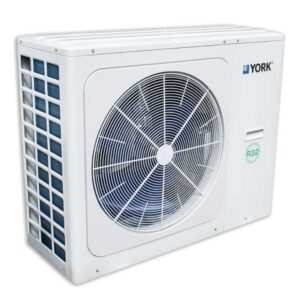
Now:
When it comes to the air source heat pump installation cost, you’re looking at something in the region of £6,000-£11,000.
All in all, the average price to buy and install an air source heat pump is currently around £14,000.
Admittedly, this sounds like quite a hefty sum. And it certainly is, especially during an ongoing cost of living crisis.
But wait! There’s good news:
By applying for the UK Government’s Boiler Upgrade Scheme, you can get one grant per property for three types of heating devices. Specifically, for an air source heat pump, the grant will amount to £7,500 from October 23, 2023 – up from the earlier figure of £5,000.
That’s quite the incentive to make the inevitable transition from fossil fuels to renewable energy sources sooner rather than later. Besides, you can easily reduce your carbon footprint and get peace of mind right now.
Now that we know what the initial costs of most air source pumps available in the UK are, we should address the typical air source heat pump running cost.
But because this tends to fluctuate widely even among households of the same size who live in the same part of the country, the real question is:
How much electricity does a heat pump use in the UK?
Based on an average annual household energy use of approximately 12,000kWh, a typical air source heat pump with a 300%+ efficiency is likely to use only around 3,800-4,000kWh worth of electricity to easily provide you with that total amount.
This is huge!
And on that positive note, it’s time to wrap things up.
How do I choose an air source heat pump?
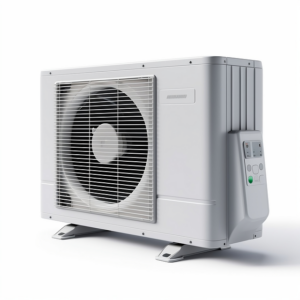
To choose the best air source heat pump for your home, consider factors such as your local climate and heating/cooling needs as well as efficiency ratings and proper sizing based on a heat load calculation.
What’s more:
We recommend that you consult with a qualified HVAC professional for personalised recommendations. Additionally, this will ensure your preferred system is compatible with the existing infrastructure.
Key takeaway:
With a renewed push towards achieving Net Zero by 2050, buying a heat pump is a great way to improve your energy efficiency, resulting in potential cost savings and reduced environmental impact.
The best part?
You now know how air source heat pumps work, what types are available on the market, and what government grants you can get. So, you’re all set to make the ideal choice for your home and your family.







